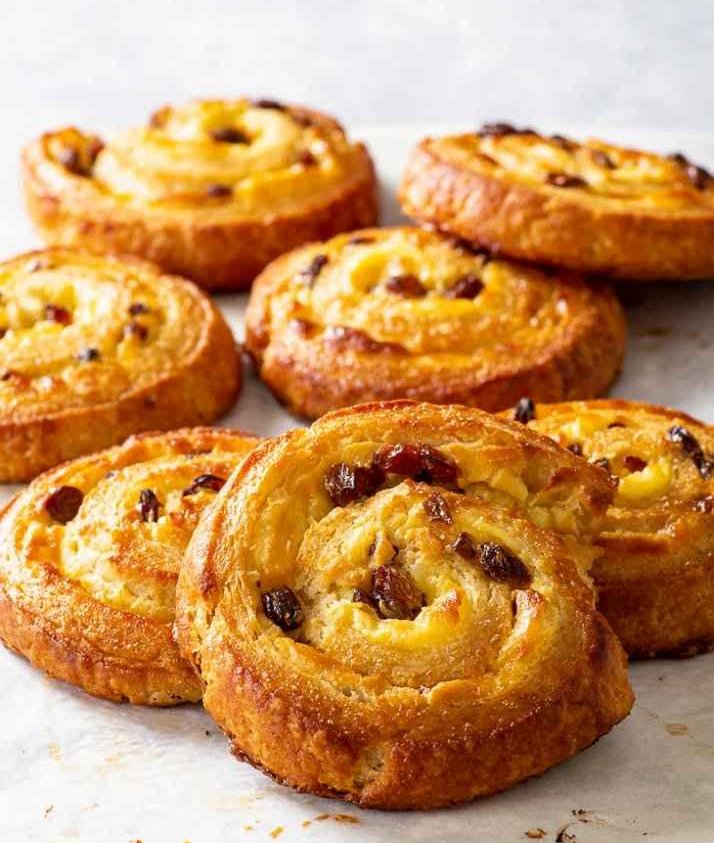-
While the pastries are proofing, adjust the oven rack to the middle position and pre-heat the oven to 430ºF (220ºC).
-
Once proofed, brush the pastries lightly with egg wash all over – make sure to egg wash both the tops and the sides.
-
Bake the first baking sheet with the Danish pastries at 430ºF (220ºC) for 5 minutes. Then, without opening the oven, reduce the oven temperature to 350ºF (180ºC) and bake them for a further 20 minutes or until deep golden brown.
-
Remove the first baking sheet with the pastries from the oven, and immediately increase the oven temperature to 430ºF (220ºC). Once the oven reaches that temperature, bake the second baking sheet with the pastries as per the instructions above.
-
Allow the pastries to cool on the baking sheet for about 5-10 minutes before transferring onto a wire cooling rack to cool until warm or completely cold, depending on how you’d like to serve them.
-
Optional: You can brush the pastries (while they’re still warm) with some apricot jam that you’ve heated up on the stovetop or in the microwave.

Storage:
-
These gluten free Danish pastries are definitely at their very best still slightly warm from the oven or on the day of baking.
However, they keep well for 2-3 days in an airtight container at room temperature, you’ll just need to reheat them briefly in the microwave (for about 20-30 seconds) to soften them up again – once re-heated, they’re just as soft and delicious as they were on the first day, but they won’t be quite as crisp.
NOTES
Note 2: If using active dried yeast, you’ll need to activate it beforehand. In this case, you will need to use warm milk with a teaspoon or so of sugar (as the yeast is difficult to activate in cold milk). You should still use cold water and cold egg yolks. Also, if using active dried yeast, you’ll need a sightly larger quantity than the one listed in the recipe due to the way in which it’s produced and processed, use about 10g.

